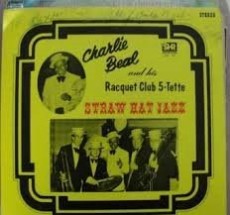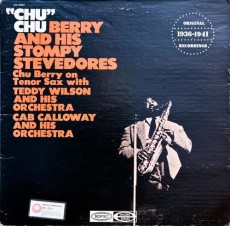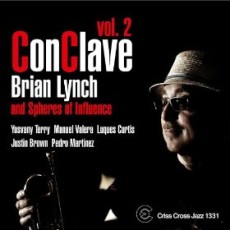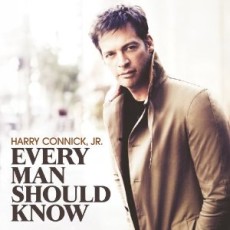
Daily Dose Of Jazz…
Charles Herbert Beal was born on September 14, 1908 in Redlands, California. He played freelance piano in the Los Angeles, California area before joining Les Hite’s band in 1930. Moving to Chicago, Illinois in 1932, he got a gig playing solo piano at the Grand Terrace in addition to working with Earl Hines, Carroll Dickerson, Jimmie Noone, Erskine Tate and Frankie Jaxon.
From 1933 to 1934 Beal accompanied and recorded extensively with Louis Armstrong. After departing from Armstrong he worked with Noble Sissle and then relocated to New York City late in 1934. There he did solo residencies and played with Adrian Rollini, Buster Bailey and Eddie South before moving to Canada for a time. After his return to the U.S. he served in the Army during World War II and upon his discharge he settled in Los Angeles again. There he played solo at the Jococo Room and found his way back into Armstrong’s ensemble in 1946.
From 1948 to 1956 he worked in Europe, returned to the States and spent three years as a member of the house trio at Embers in New York City. Later in his life he eventually returned to southern California, playing at the Racquet Club in Palm Springs. Pianist Charlie Beal passed away on July 31, 1991 in San Diego, California.
More Posts: piano

Hollywood On 52nd Street
Riz Ortolani and Nino Oliviero composed the theme song More that found its place in the pantheon of jazz classics. It was a part of the score for the 1962 film Mondo Cane. The film title translates to Dog’s World, or as the soundtrack album states, “a world gone to the dogs”.
Some melodies are used repeatedly, in different styles, each named for the part of the movie where the music is used. Of the 15 music tracks on the soundtrack album, one melody is presented 6 times, another melody 2 times. The melody which became known as “More” is presented 4 times, named “Life Savers Girls”, “The Last Fight/L’Ultimo Volo”, “Models In Blue/Modelle in Blu”, “Repabhan Street/Repabhan Strasse”, in styles ranging from lush to march and 3/4 waltz.
Originally composed as an instrumental and titled “Ti guarderò nel cuore”, lyrics were later provided by Marcello Ciorciolini, which were adapted into English by Norman Newell. At that point, “Theme from Mondo Cane” became “More” (not to be confused with an earlier pop song of the same name).
The Story: The movie Mondo Cane is filmed as a documentary and uses a variety of music to accompany various segments. The film uses a series of stories that take place in different cities around the world, i.e. dog pound, Rudolph Valentino statue, bikini-clad girls wooing sailors, pigs being slaughtered, and a manhunt among various others.
More Posts: comedy,dance,drama,hollywood,instrumental,jazz,musical,suite ta bu,vocal

Daily Dose Of Jazz…
Chu Berry was born Leon Brown Berry on September 13, 1908 in Wheeling, West Virginia. Following in his piano playing stepsister’s footprints, Chu became interested in music at an early age, playing alto saxophone at first with local bands. It wasn’t until he heard Coleman Hawkins was he inspired to take up the tenor.
Most of Berry’s abbreviated career was spent in the sax sections of major swing bands of Sammy Stewart, Benny Carter, Teddy Hill, Fletcher Henderson and Cab Calloway. He recorded with Count Basie, Bessie Smith, Mildred Bailey, The Chocolate Dandies, Teddy Wilson, Billie Holiday and Lionel Hampton among others.
Although Berry based his style on Hawkins’ playing, the older man regarded Berry as his equal, saying, “‘Chu’ was about the best.” His mastery of advanced harmony and his smoothly-flowing solos on up-tempo tunes influenced such young innovators as Dizzy Gillespie and Charlie Parker and Chu was one of the jazz musicians who took part in the jam sessions at Minton’s Playhouse in New York that led to the development of bebop.
Collaborating with lyricist Andy Razaf, he composed “Christopher Columbus”, a tune that was the last important hit recording of the Fletcher Henderson orchestra. From 1937 to 1941 he would be associated with Cab Calloway until his death from complications stemming from a car accident. On October 30, 1941, tenor saxophonist Chu Berry passed away. He was just 33 years old. Author Jack Kerouac immortalized him in the beginning of his novella “The Subterraneans”.
More Posts: saxophone

Daily Dose Of Jazz…
Brian Lynch was born September 12, 1956 in Urbana, Illinois but grew up in Milwaukee, Wisconsin. The young trumpeter apprenticed with pianist Buddy Montgomery and organist Melvin Rhyne while earning a degree from the Wisconsin Conservatory of Music. While living in San Diego 1980-81, he gained further valuable experience in the group of alto master Charles McPherson.
Moving to New York in late 1981 Brian was soon hired by Bill Kirchner, performing and recording with Kirchner’s nonet, then Horace Silver, and the Toshiko Akiyoshi Jazz Orchestra while simultaneously on the Latin scene with salsa bandleader Angel Canales, Hector LaVoe and Eddie Palmieri. By 1988 he was a part of the final edition of Art Blakey’s Jazz Messengers followed by Phil Woods and Benny Golson.
In recent years Lynch has worked with the Buena Vista Social Club, co-led bands and Latin sessions with Conrad Herwig, with Eddie Palmieri won best Latin Jazz Album of the Year Grammy for Simpatico, has immersed himself in the Afro-Cuban culture with “Spheres of Influence” collaborating with the likes of Edsel Gomez, Luis Perdomo, Robby Ameen, Ernesto Simpson, Richie Flores and Pedro Martinez to name a few.
As an educator he is a faculty member at the University of Miami, New York University and the North Netherlands Conservatory, has taught at the Stanford Jazz Workshop, Eastman School of Music, Dartmouth College, University of North Texas and Columbia University among others. Trumpeter Brian Lynch continues to perform, record and tour worldwide.
More Posts: trumpet

Daily Dose Of Jazz…
Harry Connick, Jr. was born Joseph Harry Fowler Connick, Jr. on September 11, 1967 and raised in New Orleans, Louisiana. His musical talents soon came to the fore when he started learning the keyboards at the age of three, played publicly at age five and recorded with a local jazz band at ten.
When Harry was nine years old, he performed with the New Orleans Symphony Orchestra and later played a duet of “I’m Just Wild About Harry” with Eubie Blake at the Royal Orleans Esplanade Lounge in New Orleans. His musical talents were developed at the New Orleans Center for Creative Arts and under the tutelage of Ellis Marsalis and James Booker.
Moving to New York, Connick studied at Hunter College and the Manhattan School of Music. It was here that Columbia Records A&R exec Dr. George Butler persuaded him to sign with the label releasing first a self-titled album and then “20” as his sophomore project. He soon acquired a reputation in jazz because of extended stays at high-profile New York venues.
Over the course of his career Harry has sung on film soundtracks, ventured into acting on Broadway and the big and small screens, has sold over 25 million albums worldwide, has seven top-20 US albums, and ten number-one US jazz albums, earning more number-one albums than any other artist in the U.S. jazz chart history. Harry Connick Jr., singer, big-band leader, conductor, pianist, actor, and composer, continues to perform, record and tour.


